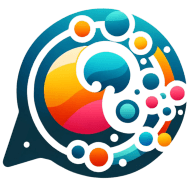16 Resources for Staying Updated On Customer Relations Trends
Staying updated on customer relations trends is crucial for business success in today's rapidly evolving market. This article presents 16 valuable resources, incorporating insights from industry experts to help you stay ahead of the curve. From listening to customers and implementing lessons from case studies to leveraging AI and conducting listening sessions, these strategies offer practical ways to enhance your customer relations approach.
- Listen to Customers and Industry Conversations
- Implement Lessons from Business Case Studies
- Learn from Your Team's Customer Interactions
- Build in Public for Direct Feedback
- Test Industry Trends in Real-World Practice
- Engage with Industry Communities and AI
- Make Personal Calls for Honest Feedback
- Conduct Listening Sessions with Customers
- Apply Insights from Data-Driven Reports
- Integrate Healthcare Improvement Case Studies
- Leverage Your Professional Network
- Combine Specialized Resources with Interactive Learning
- Shadow New Employees for Fresh Perspectives
- Participate in Peer Groups for Practical Insights
- Review and Apply Customer Feedback Regularly
- Practice Customer Support Roulette Weekly
Listen to Customers and Industry Conversations
Customer relations is constantly evolving, and I've found that the best way to stay sharp isn't just reading the latest playbooks—it's listening directly to the conversations customers and practitioners are already having. My go-to resource is a mix of niche industry podcasts and online communities where real-world challenges are being discussed in real time.
One podcast I never miss is "The Modern Customer" with Blake Morgan. It's practical, forward-looking, and filled with case studies that highlight not only what's working but also why it resonates with customers. Pairing that with LinkedIn communities focused on CX allows me to test those ideas against what professionals are experiencing on the ground. This mix of expert insight and peer-to-peer discussion helps me separate shiny trends from strategies that actually drive loyalty.
But it's not just about passively consuming information. I also schedule quarterly "customer listening sessions," where I step outside of the boardroom lens and spend time in frontline conversations—whether that's support tickets, social media interactions, or direct calls. It's a simple method, but it grounds everything I learn in the lived experience of customers themselves.
What keeps me current isn't chasing every new tool or buzzword, but filtering insights through the question: how does this make the customer's life easier or their experience feel more human? This approach has helped me cut through noise, adopt practices that last, and continuously adapt to what customers actually value.
Implement Lessons from Business Case Studies
The most reliable method has been a structured review of Harvard Business Review case studies focused on service design and customer engagement. Each quarter, I select three to five recent analyses and extract practical lessons that can be tested within our own operations. One example was a study on how healthcare providers improved satisfaction scores by redesigning patient communication touchpoints. The insight led us to implement shorter, clearer follow-up emails that improved response rates by nearly 20 percent. Using case studies in this way avoids relying on abstract theories or fleeting trends. It provides concrete examples of what has worked in comparable settings, and it allows us to track measurable outcomes when adapting those practices.

Learn from Your Team's Customer Interactions
In my experience, the best way to stay up-to-date on customer relations isn't by reading a book or attending a conference. The best information isn't out there; it's right here in our own business. It's in the conversations our teams are having every single day.
My method for staying up-to-date is to treat my own team as my number one source of information. My teams are on the front lines, and they are talking to our customers every single day. They know what's working and what's not, and their insights are invaluable.
The specific method we use is a short, weekly meeting with my marketing and operations teams. The meeting is not a performance review. It's a conversation. We go around the table, and every person has to answer a simple question: "What is one thing you learned from a customer this week?" The person who answers the phones might have a new insight into a customer's frustration. The person who packs the boxes might have a new insight into a delivery problem. My job is to listen and to find the patterns.
The result is that our business is always up-to-date on what our customers need. We're not just reacting to trends; we're anticipating them. This has made our business more resilient and more profitable. My advice is that you have to stop looking outside your business for the answers. The best source of information is the people who are in your business every day. You have to create a system for them to share what they are learning.

Build in Public for Direct Feedback
I stay up to date on customer relations by listening more to people than to playbooks. Trends shift fast, but human behavior and cultural signals always tell the real story first. At Ranked, that means staying connected to the creators and communities who drive the conversation. Their feedback on what feels authentic, what feels forced, and what builds trust is our most reliable resource.
One specific method that has been invaluable is building in public. By sharing our updates, app redesigns, and even the challenges openly on LinkedIn, we invite direct responses from creators, brands, and peers. That ongoing dialogue has given us insights you cannot find in a whitepaper. For example, when creators told us transparent payments mattered more than flashy features, it reshaped our product roadmap and built stronger customer trust.
The lesson is simple: To stay current in customer relations, you do not just read industry reports; you listen where culture is being lived, shaped, and shared.
Test Industry Trends in Real-World Practice
Staying up to date about customer relations is not really an option; it's like flossing. If you let it go long enough, it all starts coming undone. I treat it as a daily ritual rather than some yearly revelation. I use a mix of cutting-edge trade press, reports from analysts, and forums where practitioners expound on what does work rather than what looks catchy on a keynote slide.
One resource I return to again and again personally is research on customer experience done by Gartner. Not because I feel I need to rave about Gartner, but because it has both trends at a really high level and grungy implementation details. Throw in direct feedback loops, customer research, NPS data, and social listening, and you get the rough reality check no glitzy report can deliver.
I read, I listen, and then I mercilessly test in practice. Because "best practices" remain rumors until you've violated them personally.

Engage with Industry Communities and AI
To stay up-to-date on the latest trends and best practices in customer relations, I regularly engage with industry-specific communities and thought leaders through platforms like LinkedIn and CX-focused newsletters. I also make time for webinars and virtual roundtables where practitioners share real-world strategies. Staying connected to these conversations helps us continuously refine our approach and stay ahead of what customers truly value.
One new thing I am experimenting with is generating AI podcasts from uploaded white papers. This provides me with insights that I might not get simply from reading the text.
Make Personal Calls for Honest Feedback
I don't keep up with "trends" in customer relations. My business is built on common sense. The one method I have found to be most effective is simple: I call every single client after the job is done to get their real, honest feedback. My specific resource for staying up-to-date is my phone.
The process is straightforward. A week or two after we complete a roof, I personally call the homeowner. I don't just say, "Did everything go well?" I ask them, "How did the new roof hold up with the last rainstorm?" or "Did you notice any issues at all?" I listen to their tone and their specific feedback. This isn't just about a sales pitch; it's about making sure we did the job right and that they're completely satisfied.
The outcome of that simple call has been significant. I've caught minor issues that a homeowner might not have mentioned in a review—like a crew member leaving some debris behind or a minor question about the new shingles. This direct feedback allows me to address small problems before they become big ones. It helps me coach my crew and it shows the client that I care about the details, not just the final payment. It's more valuable than any survey.
My advice to any business owner is simple: the latest trends and best practices aren't found in an article. They are found in the voices of your customers. Stop looking for a complicated method and just pick up the phone. A direct, honest conversation is the best way to stay in touch with what your customers really want. That's the only resource I'll ever need.
Conduct Listening Sessions with Customers
Keeping up with your customer relations is not just about reading reports or following the latest buzzwords; it's really about getting close to the people you serve. At Legacy Online School, I do a bit of both.
I do keep my eye on research and various thought leaders in the field of customer education (Intellum and Docebo have interesting articles and insights). However, the material I learn the most from is simply being present in conversations with our families. Each month, I have small "listening sessions" or coffee hours, where I am able to listen to our parents and students talk. They share things I won't become aware of from a whitepaper, such as "week two felt lonely for me," or "I wasn't clear on how I could reach my support coach." Those comments have shaped our service playbook far more than any trend report could.
We also try out small experiments. A recent pilot we conducted connected new families with a "mentor parent" who had been with us for at least six months. It was simply an idea, but after we paired families together and listened to parents say it was very helpful, we cut support ticket levels in half and increased family satisfaction scores by about 15 points.
To me, the gold standard of best practice is engaged curiosity and close proximity, paired with the willingness to try small modifications quickly. The industry reports provide you with solutions that have been tried before, but it's the real voices of customers that provide the true purpose for your customer service.

Apply Insights from Data-Driven Reports
Staying current in customer relations requires combining real-time insights with structured learning. One highly effective method is following industry-specific newsletters and research reports from organizations like the Customer Experience Professionals Association (CXPA) or HubSpot. These resources provide curated case studies, emerging trends, and practical frameworks for improving engagement, retention, and satisfaction.
A specific example is subscribing to HubSpot's "State of Customer Experience" report, which consolidates data from thousands of companies worldwide. Reviewing this report helped identify that proactive, personalized communication—rather than reactive support—was becoming a key differentiator in loyalty. Applying these insights, we adjusted our follow-up workflows, implemented segmentation for targeted outreach, and introduced automated check-ins for high-value clients. The result was a measurable increase in repeat engagement and positive feedback, demonstrating how staying informed through reputable, data-driven sources directly shapes more effective customer relations strategies.

Integrate Healthcare Improvement Case Studies
I rely heavily on case discussions from the Institute for Healthcare Improvement. Their webinars and published briefs frequently explore real-world scenarios where patient engagement strategies either succeeded or fell short. The format allows me to see both the practical application and the measurable outcomes of specific approaches. I also make a point to review their "Patient Experience" updates each quarter, which often highlight small process adjustments—like rephrasing intake questions—that have outsized effects on satisfaction scores. Integrating these insights keeps our own practices aligned with proven methods rather than theoretical models, and it helps the team adapt quickly to evolving expectations.

Leverage Your Professional Network
The best practices in my business aren't about a script or a chatbot. They're about empathy and human connection, and those are things that are always evolving. In my world, "customer relations" is about dealing with a person's raw emotions. You can't learn that from a book or a report. You have to stay connected to the real world.
My strategy for staying up-to-date isn't about reading the latest reports; it's about staying connected to my network. I talk to other business owners in the mental health field in Columbus, and we share information. We'll send each other a text if we hear about a new regulation or a new technique that's working for them. That informal, personal network is more valuable than any subscription.
The one resource I would recommend is your own professional network. In a small business, you can't be an expert on everything. You have to rely on the people around you who are in the same boat. My advice is to build a real community with other business owners. You'll get information that is unfiltered and trustworthy, and you'll also have a support system for the tough days.
Combine Specialized Resources with Interactive Learning
To stay up-to-date on the latest trends and best practices in customer relations, I rely heavily on specialized industry publications and platforms like CustomerRelations.io. This resource provides regular insights, case studies, and data-driven articles focused specifically on customer relationship management, helping me stay informed about emerging strategies and technologies.
Additionally, I participate in online webinars and professional networking groups where thought leaders share practical experiences. This combination of curated content and interactive learning ensures I apply cutting-edge methods to foster stronger customer connections and improve ROI.

Shadow New Employees for Fresh Perspectives
I stay current on customer relations by participating in ride-alongs and peer learning within our team. I began shadowing new technicians during their initial weeks to ensure they were comfortable with our service process, but I soon found I was learning as much as they were. Observing how new team members interact with customers often reveals important details, such as clear introductions or straightforward explanations, that significantly enhance the customer experience.
One ride-along was especially memorable. A new technician explained a wasp treatment to a homeowner in clear, calm terms, which immediately put the customer at ease. I realized that customers prefer reassurance over technical language. Since then, I have continued to observe peers and exchange feedback, as this ongoing learning keeps my approach grounded in real customer interactions.

Participate in Peer Groups for Practical Insights
Regular participation in industry-specific peer groups has been the most valuable method for staying current. In one network of nonprofit and government service consultants, members share both successes and missteps in handling client communications. A recent session focused on digital accessibility in customer relations, where a peer demonstrated how small adjustments in formatting emails for screen readers improved trust with visually impaired stakeholders.
That practical insight was something no article or training would have delivered with the same immediacy. Beyond the exchange of tactics, these groups create accountability—hearing how others refine their client experience encourages us to continually reassess our own practices. The direct feedback loop and real-world application make peer networks a resource that consistently provides actionable updates on evolving standards.

Review and Apply Customer Feedback Regularly
I stay current on customer relations by closely reviewing feedback from follow-up calls and service reports. After each job, customers share what they appreciated and where we could improve. Early on, I made it a habit to review these notes to better understand homeowners' communication preferences. For example, after a family in Alpharetta expressed appreciation for my step-by-step explanations, I incorporated this approach into every job I undertook.
This adjustment immediately strengthened my customer relationships. Clients felt more at ease when I explained my process, which resulted in more positive reviews highlighting my thoroughness and professionalism. Using customer feedback as a learning tool has been the most effective way for me to stay aligned with best practices and enhance my connection with homeowners.
Practice Customer Support Roulette Weekly
My best source of learning is direct contact with our students. I practice what I call "Customer Support Roulette." Once a week, I answer or review support tickets and chats myself. It gives me raw insight into what frustrates or delights our students. This real-time view shapes better decisions than any report and keeps our focus squarely on the customer.








